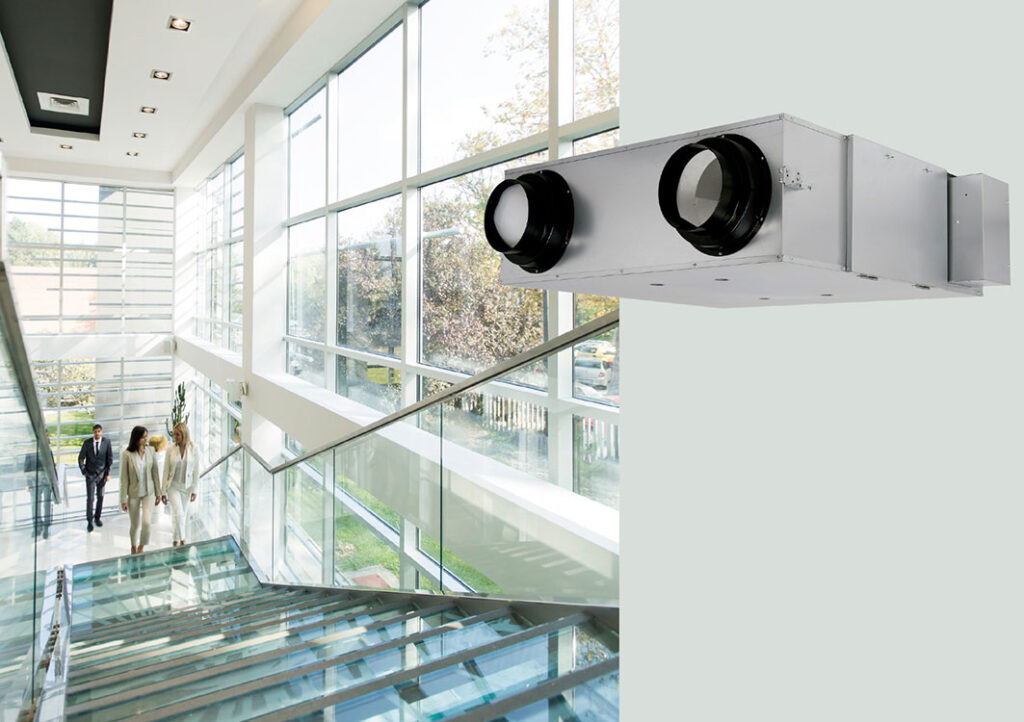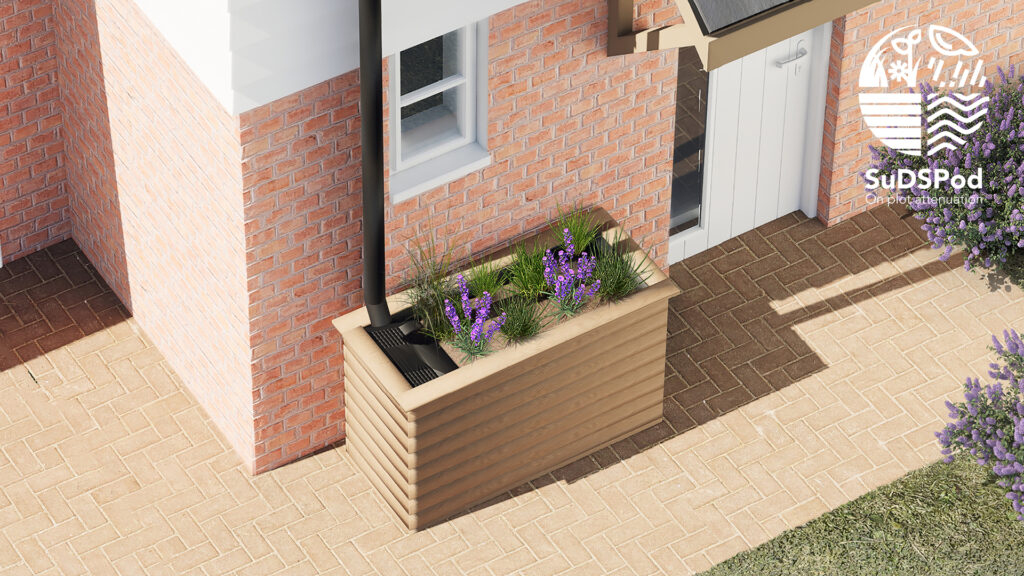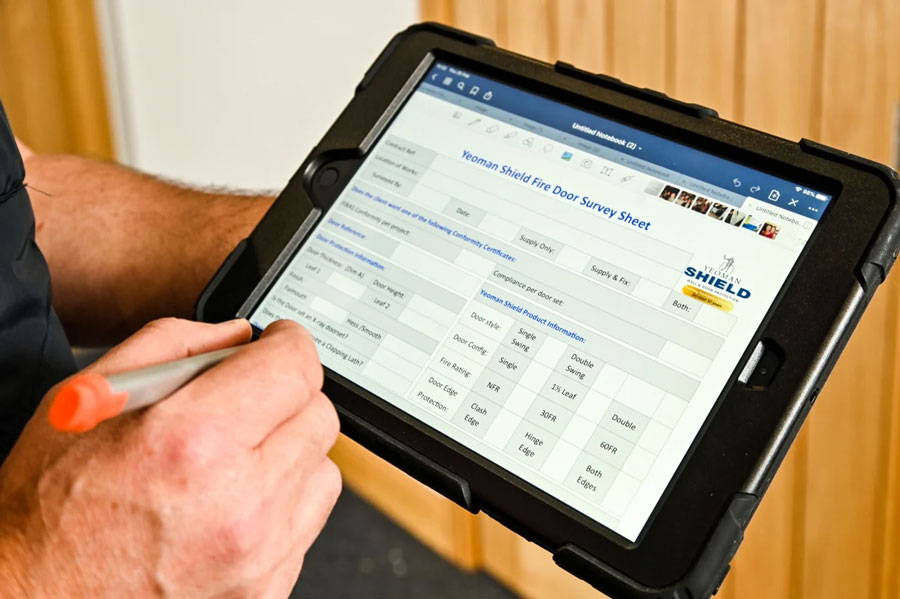On the Table: Information Technology
Our On the Table contributors, from L to R:
- Steve Thompson, Chair, BIM4M2 & BIM programme manager, Tata Steel
- Julie Maguire BIM coordinator, Merriott Radiators
- Stephen Sturch, sales & marketing manager, Armacell
- Joanna Lush, business development manager, GX Glass
Q: Collaborative 3D Building Information Modelling (BIM), with all project and asset information, documentation and data being electronic, will soon be required on all Government projects. How ready do you think the industry is, ahead of the 2016 deadline?
JL The latest statistics from the NBS, which put awareness and usage of BIM at under 50% (NBS BIM report 2014) are an indicator that the industry hasn’t fully committed yet.
Resistance to change, due to the investment of time and money (and the sometimes baffling data requirements) needed for BIM, is behind some of those statistics. As with any technological change in ways of working, I think we will see a surge as the late adopters within the manufacturing industry start to see more requests for BIM from large corporates, as well as the public sector, into 2016, and realise that it will affect how and when they are specified.
SS The construction industry has made significant advances in terms of adopting BIM in the last 12 months. For example, we have just become the first flexible insulation manufacturer to offer BIM (Building Information Modelling) objects for our Armaflex product ranges, which are free to download from the NBS National BIM library.
Although not all manufacturers have embraced BIM, there are generally one or more companies in each product category that have done so, for example, Armaflex product ranges recently became the first objects for flexible technical insulation.
The general feeling is that the industry has reached a tipping point in terms of BIM adoption and as more specifiers choose to work with it, and legislation requires it on all Government projects in 2016, we expect to see further, rapid uptake.
JM At Merriott, we’ve worked hard to ensure all our products are BIM-ready and meet Level 1 standards. Being early adopters and achieving Level 1 reasonably quickly means we’re in a good position to be one of the first to reach Level 2. However, while many other manufacturers are currently at (or well on their way to attaining) Level 1 status, it’s unlikely that most will achieve Level 2 standards by January 2016 – especially given the huge step up between levels. Another consideration is that some Level 1 manufacturers are deliberately biding their time and waiting to see what sort of BIM regulations the government sets out before progressing to Level 2.
ST I certainly don’t think the industry as a whole will be ready, but it’s still great to see how far we have come over the last few years. Remember that not everyone will be working on public projects requiring Level 2 straight away, and those that will, tend to be prepared for the challenge. Outside of those working on public sector projects there is still a long way to go, but I also sense that many realise the benefits and potential for digital processes within construction and are getting to grips with how it can benefit their businesses.
Q: How did you initially decide whether adopting BIM was the right decision?
JM Before adopting BIM in June last year, we noticed a significant increase in its presence – our area sales managers in particular started hearing about it more frequently, from customers and consultants alike. This prompted significant research into what BIM is, how it works and how Merriott’s customers could benefit from it. We were also seeing growing demand from the design specification market, where BIM has an important role to play.
In addition to this, there was an influx of government projects with contracts stipulating BIM as a mandatory requirement of the tendering process. These acted as a further catalyst for us to get BIM-ready. As a result, we arranged for all of our products to be drawn up as models with COBie data, and got them online as soon as we could – to become the first radiator manufacturer in the market to have its entire range live on BIMstore.
ST For Tata Steel it was a no-brainer, looking at the current and future development of technologies and the direction of travel. It certainly wasn’t something we only looked at from a UK perspective either, we looked at the markets we sold into, and the range of products that may be affected, and it was pretty clear from even the most basic calculation that it was more of a risk not to adopt.
“It was pretty clear from even the most basic calculation that it was more of a risk not to adopt [BIM]” – Steve Thompson, Tata Steel
SS The start point was our stated objective of making buildings more energy efficient. With buildings consuming around 40% of the UK’s energy, making BIM objects available for high performance flexible insulation means that we are helping specifiers achieve greater energy efficiency.
We felt that was important because it allows designers and installers to be able to use the BIM objects to create realistic, intelligent 3D models and then see what effect it has on the other elements of the design.
This ability to capture, explore and analyse data associated with insulation in the HVAC system represents a step change in the industry. As well as having a bearing on the overall energy performance of the building, it provides clients with greater visibility of the overall operating costs and environmental footprint of the development.
The information in these models remains consistent and available to everyone involved in the project and will result in more informed decision making around energy efficiency and reduced running costs.
JL We decided to adopt BIM based on a number of factors:
- A desire to get ahead of the competition.
- We saw how prevalent data is for the specification market, and it made sense to digitise our products.
- We could see that it would make it easier for our products to enter the project lifecycle.
- It is a form of future proofing for public sector work.
- We also see the BIM product data as a valuable commodity for our business.
Q: What proportion of your current, active projects are requiring BIM? Is the decision to use BIM on projects predominantly client-led, or are others spearheading its usage?
ST As a manufacturer that’s not easy to say. From a BIM4M2 perspective though, we have been working with Barbour ABI to understand current levels of adoption. From its figures, 12% of all projects say they are using BIM collaboratively, and that increases to 32% of projects with a value of £10m or over.
SS A growing number of the projects where our Armaflex product is specified use our new BIM objects. Those that do soon realise that it offers them a number of advantages – there is huge potential in specifiers being able to use BIM objects to visualise and digitise a building project’s lifecycle. For example, our new BIM objects allow rapid and meaningful energy analysis at the very early design stages and that will result in a huge potential to drive through greater energy efficiency over the entire building lifecycle.
JL The majority of the projects we’re working on now were specified up to two years ago, and it’s only recently that we’re starting to see a small number of requests for BIM data right at the beginning of an enquiry.
We believe that the spearheading of usage will start with our end clients – the developers and architects – and will filter down the specification process to us as a product manufacturer within the next 12 to 18 months.
JM The analytics we receive from BIMstore are the best indicator of who is using our models – and we estimate that active projects requiring BIM account for up to 20% of our business at present. It can be quite difficult to make the connection between those downloading our components and the jobs for which they have been specified.
Currently, Merriott’s decision to use BIM has been predominantly a reaction to rising client demand. That said, we are also proactively spreading the word about BIM among contractors, housebuilders, specifiers and architects and letting them know that our models are available for download. This is partly in response to feedback from customers (particularly architects) that they often aren’t made aware by manufacturers of which products are BIM-ready and where to get them from. Feedback like this really helps us to drive our BIM offering forward and provide our customers with an even better service.
Q A recent survey conducted by UK Construction Week, in partnership with BRE, found that 71% of non-manufacturing respondents believed that suppliers are not moving quickly enough to provide BIM objects. Conversely, 41% of manufacturers said there hasn’t been the requisite level of demand from clients to warrant investment in creating BIM components. In your view, how can we best combat this ‘chicken and egg’ scenario? Should manufacturers just bite the bullet and invest, in the expectation that BIM will be widely used in the future?
SS BIM does require a significant investment and it is therefore understandable that some manufacturers have not yet gone ahead. However, in becoming the first to offer BIM for flexible insulation, we took the view that because it makes specifying insulation easier, and gives both the designer and the client better visibility of building performance, it was important to make the investment.
JL We took the pro-active approach and invested in 2014. The need for BIM from an environmental, time, cost, and data management perspective is well documented, and our audience comprises both contractors and specifiers. We can only see positives from our products being available in the BIM format, so that they can be dragged into specs and drawings, which is great for us.
If BIM does what it has set out to do, then why would we not want our products available at a click of a button?
JM As one of the first commercial heating and cooling manufacturers to adopt Level 1, at Merriott we are confident that BIM will be widely used going forward – and we’re ready to respond to growing demand. However, for other manufacturers, the approach often depends heavily on whether BIM becomes a mandatory regulation for building projects. As it is a guideline at the moment, there is a degree of uncertainty around BIM and a lack of urgency to invest in it. As a result, most are waiting to see what the government does before progressing to Level 2. In other words, it’s likely to be a combination of demand and legislation that will dictate further investment in BIM.
ST No, I certainly wouldn’t recommend just biting the bullet and investing. Firstly, there are many different types of BIM objects out there, some much better and more useful than others, so you need to think about what your customers need – what type of data and geometry. Everyone wants different information, from ‘all of your BIM’, to specific data that may not be in an object bought off the shelf.
Secondly, not all manufacturers are affected in the same way. I’d recommend manufacturers visit the BIM4M2 website, where we have a section called The Curve. This provides a tool to give you an indication on the potential impact to your business, followed by impartial guidance on how to develop your BIM strategy and implement it.
Q: In your opinion, to what extent would prescriptive standards make the journey to BIM compliance easier? Initiatives, such as the NBS’ BIM Object Standard, are helping to facilitate greater standardisation, but would you agree that the road to BIM implementation is perhaps more complicated that it needs to be?
JM Yes to both. Prescriptive standards and more clarity would have made Merriott’s BIM journey considerably easier, as well as making Level 2 compliancy by January 2016 much more achievable. If the Government made BIM a mandatory requirement (as opposed to a guideline), this would undoubtedly create a greater sense of urgency to comply. It would also make the transition to implementation clearer and more straightforward. For example, with no government framework in place to dictate how BIM should be implemented, there are no standardised templates for transferring technical drawings. This, in turn, leaves the question of how best to present information to clients open to interpretation – which has been known to cause conflict between manufacturers and BIM host sites, such as BIMstore and NBS.
“If BIM can help to encompass or standardise the sustainability side of building design, then we think adopting BIM might become a lot easier and more appealing” – Joanna Lush, GX Glass
JL I think that the manufacturing industry would wholeheartedly welcome the idea of prescriptive standards to make it easier to create BIM objects of products and materials. However, from our experience of creating objects, I think there will be a lengthy period of time before all required building products and their components have standardised data. The shared and distinct data points needed for a plastic light fitting, a brass tap, or floor paint are highly complex. It’s going to take a while.
ST Clear standards certainly help, but I do mean standards such as the BS 8541 suite, not proprietary documents such as the NBS BIM Object Standard or its equivalents. BIM4M2 are working with others across the industry to develop standard attributes and data structures to provide consistency.
SS Buildings, by their very nature, are complicated and becoming more so as greater energy performance has to be factored into the design. It is encouraging to see initiatives such as Object Standard because it creates a platform for standardisation.
Q: How closely have you worked with your supply chain to promote BIM? Have they been receptive to BIM, or are many still reluctant? Please use examples where relevant.
JL We have soft launched our BIM objects via our website, and we’re promoting them to our specifiers and clients, but the uptake is fairly small. Until BIM is more prevalent with the specification market, we’re not using it as point of differentiation. When it does pick up, we will be actively using it as a marketing tool and USP.
SS We find that most people are receptive to BIM once they have tried it. For instance, specifiers like it because it allows them to make an initial presentation to a client of realistic, factual information on the running costs of various designs. Contractors, too, are given a clear plan of action for exactly what needs to be done on site.
As a result, people in the industry are becoming more receptive to BIM and we can see it becoming a key driving force in the specification and installation of insulation.
Q: To what extent do you believe that BIM can help the industry move from a lowest cost model to a best value model?
ST Certainly moving to a whole life model, and embedding real user requirements into the design and delivery process with really help, including visibility of progress throughout the process.
JM BIM has the capacity to deliver impressive financial and logistical results, as well as having a positive impact on the environment. Clash detection, for instance, saves both time and money by cutting re-deliveries (and, in turn, carbon emissions), and also means subcontractors and tradespeople can finish the job on time without issue – all of which makes for a much more sensible method of construction. It’s a simple concept, but it allows for a building design process that is virtually fault-free. Likewise, having a feature that can produce a Bill of Quantities from just one model eliminates the risk of human error.
Even before construction begins, the ability to access all necessary information about every aspect of the build in one place – from room configuration to design aesthetics – means less time is spent searching or waiting for replies to correspondence. BIM provides the best-value model for building by taking all functions into account – not just the cost of one product. It encourages a much more efficient way of working.
SS Our BIM objects are already helping specifiers and contractors share knowledge and work in collaboration on the common goal of achieving a reduced carbon footprint. This early and on-going working partnership results in reduced construction schedules, greater predictability of building performance, elimination of design anomalies and benefits in overall project costs. All these factors help drive through best value options, and have the potential to make significant savings on a development.
JL Combined with sustainability initiatives and the concept of circular economy, BIM will help to pave the way for a best value model that provides the longevity needed for building and data in the future, rather than the most cost-effective option.
Q: Can you yet say confidently that the investment made in BIM (including software licenses etc.) has been worthwhile so far, or is going to take years to prove its return? Is it more a case that you ‘couldn’t not make the investment’?
JM At Merriott, given that all of our products are custom-designed, simply being on BIMstore is opening up lots of specification opportunities for us in new build projects – which we expect will lead to both new and repeat business. We certainly feel that our investment so far has been worthwhile, and is in line with current BIM demands.
Based on the exposure we’ve had to BIM so far, we’ve been very impressed, and we’re already seeing the positive effect it is having on the way the world of construction operates. It’s too early to quantify the return on our investment in BIM, but we must remember that the official deadline is still several months away. Over the course of 2016, we expect to see a noticeable spike in demand and, subsequently, a significant ROI.
SS The insulation of mechanical services is one of the most effective ways of improving a building’s energy efficiency. Aside from reducing energy loss, flexible insulation prevents condensation and can significantly extend the life of equipment. Therefore, the value of mechanical, flexible insulation is difficult to underestimate, especially as the payback can be 12 months or less.
These BIM objects will make a significant contribution to the design, modelling and running of a building over its life cycle and will therefore revolutionise the way in which insulation is specified. When this is factored against the initial cost of developing BIM, we feel as though it is an investment that adds value to our customer proposition.
ST What we have created so far as an industry, and as BIM4M2 or Tata Steel, is a platform to build from, so many of the benefits will not be realised for some time. However, yes, I’m confident it has. The structuring of data internally, as well as the willingness of many across the industry to share experiences and work together has been of huge benefit.
JL As a manufacturer and subcontractor, we know that our investment in creating BIM objects is a long term one, and if BIM does what it has set out to do then the business rationale writes itself.
We understood upfront that it would require a commitment to updates and on-going maintenance of the data. Given that we’re currently averaging 16 BIM downloads per month, combined with the speed at which specifications become tenders, we know it’ll be a few years before it has paid for itself and a few more before we see a significant return.
Q: What would you say is currently the most significant barrier to wider BIM adoption? In your opinion, how best could it be tackled?
SS One of the largest barriers to the widespread adoption of BIM was a lack of expertise and knowledge to fully put into practice what was a new concept.
However, as more BIM objects are made available and the industry works together to provide training, this is now changing.
“It’s too early to quantify the return on our investment in BIM, but we must remember that the official deadline is still several months away” – Julie Maguire, Merriott Radiators
JL There is a wider issue with the adoption of data-based systems for the industry – not just related to BIM.
BIM has been created to standardise information and make a coherent, single object to represent a building. However, there isn’t a sustainability system for buildings or product and material certification in the UK or globally that can slot neatly into or alongside BIM.
There is a vast amount of information required for the specifications, green credentials, and project lifecycle of various standards. For example, those working towards BREEAM and LEED for their building specifications want one type of data and product information, but there are those who look for material and product specifications such as BIFMA, Cradle-to-Cradle, or the Health Product Declaration – not to mention those large corporates who have their own specification systems. Which one should we adopt? Which should we work towards?
If BIM can help to encompass or standardise the sustainability side of building design, then we think adopting BIM might become a lot easier and more appealing.
JM The biggest barrier to BIM adoption is the approach taken to date. As BIM isn’t mandatory yet, manufacturers are poised and waiting for this to happen, which is slowing the process down. Firm legislation is needed to give them the confidence to invest. For this to happen, the BIM taskforce and the government need to join forces to promote and implement BIM for the benefit of everyone – from manufacturers and architects right through to clients.
Q: What is your biggest headache currently concerning IT and what advice and solutions have you been seeking to address it?
SS Our advice would be to invest in the best quality software as that will avoid issues with bugs, glitches and other issues that affected some BIM objects in the very early days.
JM Converting existing technical documents into electronic ones – and ensuring they’re in a user-friendly format that allows for seamless data transfer to the manufacturing process – has been a significant challenge. Not only is it time-consuming, but ultimately it also means training existing IT staff and/or employing new people, as well as acquiring additional re-formatting software and hardware. This equates to a significant investment on top of what has already been spent on creating BIM models, which is a real issue for many manufacturers. If BIM were mandatory, the promise of returns would serve to justify this additional outlay to those who are currently reluctant – which is another reason why a robust legislative framework would be welcome.




















